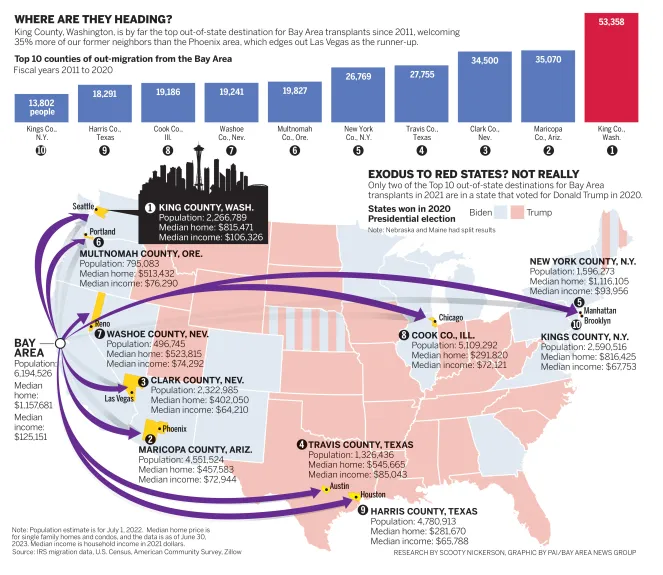The notion of California residents and businesses departing the Golden State en masse, a concept that had previously been dispelled by multiple studies during the onset of the pandemic, is regaining traction with fresh research demonstrating that the state is undergoing a population exodus to its neighboring counterparts.
A recent study conducted by the Stanford Institute for Economic Policy Research (SIEPR) in October has unveiled the alarming trend of California “hemorrhaging” residents to states such as Arizona and Texas at rates surpassing any seen in recent times. This population drain encompasses a greater proportion of college graduates and individuals spanning all income brackets, as per the study’s findings.
Despite continuing to hold its status as the most populous state in the nation, boasting a population of over 39 million residents according to the latest U.S. Census data, California is now confronted with the stark reality that its average population growth rate, spanning the years from 1959 to 2022, has been a mere 1.52%. More notably, since the year 2000, the state’s growth rate has consistently dipped below this average, even plummeting into negative territory in both 2021 and 2022.
In a post-COVID pandemic environment, California did witness a boost in natural population growth, evidenced by an increase from 87,400 to 106,900 in the number of births compared to the number of deaths between 2021 and 2022. Concurrently, foreign immigration also surged, ascending from 31,300 to 90,300.
However, this upward trajectory was overshadowed by a more troubling trend — the migration of residents out of the state has intensified. The study reported a net loss of 407,000 residents who relocated to other states between July 2021 and July 2022.
The soaring cost of living in California is frequently pinpointed as a significant driver for both residents and businesses seeking refuge elsewhere, a factor that, according to the study, has the potential to inflict grave consequences on the state’s job market and fiscal prospects. The report also posited that California’s stringent environmental policies and mandates could be further propelling the migration to states with more lenient policies in this regard.
The SIEPR policy brief cautioned, “This is certainly not an argument for abandoning the state’s commitments to the California model [of setting aggressive green energy goals], but it suggests paying close attention to the choices that are made in the energy transition to avoid backlash and major economic losses. California can only be a leader in climate policy if it retains the support of a voting majority in the state and a sufficient level of economic vitality.”
The study did reveal that approximately two-thirds of those who left the Golden State did not cite politics as a contributing factor in their decision to relocate. Nevertheless, the population drain has notable political ramifications, with California losing a congressional seat in the aftermath of the 2020 Census while Texas gained two seats.
Crime rates have been offered as a reason for some of those departing California, although the authors of the study stressed that “The perception about higher crime in California, however, does not correspond with the facts and needs to be addressed more aggressively by Golden State political and business leaders.” Eric McGhee, a senior at the nonpartisan think tank Public Policy Institute of California, previously asserted that California’s population has been steadily shrinking for three decades, suggesting that the state may face a period of stagnation in the foreseeable future.
